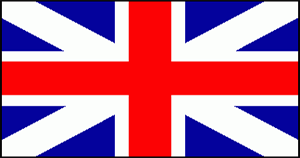Battle of Fort Mackinac
26 July � 4 August 1814 on Mackinac Island, Michigan



| |||||||||||||||||||||
|
Early in June, Maj. George Croghan, of the Fort Stephenson fame, recieved orders to team up with Capt. John Sinclair of the U.S. Navy to destroy British strength on Lake Huron. The ultimate locus of power on Lake Huron was Fort Mackinac, but Croghan took time to loot St. Josephs and did not appear at fort mackinac before August 4. He had 700 men with him, and Sinclair's flotilla had 5 ships.
Col. George Croghan, U.S. commander at Detroit, and his superior, Gen. William H. Harrison, attempted to retake Mackinac in 1814. It was part of a 2-pronged offensive the other being against Prairie du Chein on the Mississippi River.
The goal of these attacks were to establish American control in the Upper Great Lakes. At Prairie du Chein, the Americans were initially successful, and their success increased the strategic importance of Fort Mackinac. The American officers discussed whether they should first destroy Fort St. Joseph, on St. Joseph Island, seeing how it was the easiest target. They reached Fort St. Joseph on July 20 and burned it, but they did not burn the civilian buildings. In the Canadian Sault St. Marie, Croghan and his men destroyed civilian property.
Fort Mackinac was now commanded by Col. Robert McDouall of the Royal Newfoundland Regiment. One of the first things he had done when he assumed command was to build a blockhouse on the heights. This allowed the British to capture the fort in 1812.
On July 26, a squadron of 5 American ships carrying 700 soldiers arrived off Mackinac planning to assault the fort. The landing force was commanded by Croghan. He discovered that the fort stood so high that the naval guns could not be elevated high enough to fire on it; thus the soldiers would have no support from the ships if they stormed the walls. For 2 days, the ships shelled the fort with little if any effect. The shells all landed in vegetable gardens on the open ground below. The squadron pulled back out to sea in a growing fog, which lasted a full week.
As the weather cleared, they came in at the western end of the island, as the British had done in 1812. After heavy bombardment of the area by the naval guns, the soldiers landed. Led by Maj. Andrew Holmes, they worked their way through dense woods in which lurked hostile Indians, and over a ridge into the flat, open clearing of Dousman's farm.
Instead of letting himself be penned up in the fort, McDouall, who knew the ground well, placed his small force behind low breastworks at the opposite side of the clearing. In addition to their muskets and rifles, they manned 2 field guns. As the Americans came into the open, the British had ideal targets; they killed 13 troops, including Holmes and 2 other officers, and wounded 51.
Croghan pulled his men back into the woods and down to the beach. There they climbed into the boats and rowed back to their ships. The next day, the Americans sailed away. Fort Mackinac remained firmly in British hands.
After the war, the British once again turned Fort Mackinac over to the Americans because of the Treaty of Ghent. The turnover was not until July 1815.

